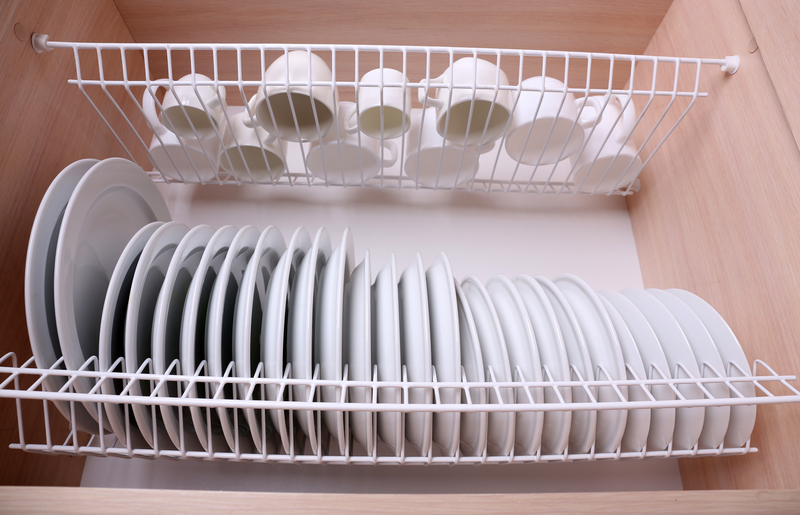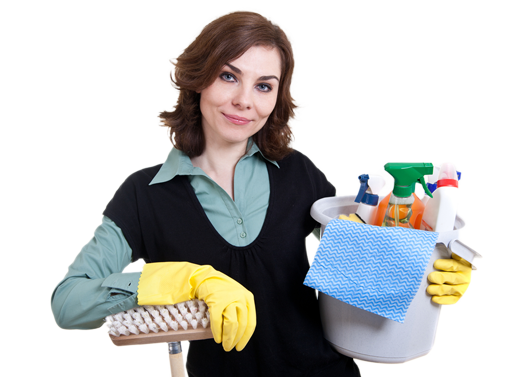Peerless Techniques for Mould Removal on Sills
Posted on 20/06/2025
Peerless Techniques for Mould Removal on Sills
Mould growth on window sills is a stubborn and unsightly problem that plagues homes and offices alike. Whether you are dealing with black mould, mildew, or other fungal infestations, it is essential to address the issue promptly to preserve indoor air quality, protect your property, and ensure a healthy living environment. In this comprehensive guide, you'll discover peerless mould removal methods for window sills, rooted in expert advice, proven science, and reliable cleaning strategies.

Understanding the Causes of Mould on Window Sills
Before launching into removal techniques, it's crucial to understand why mould forms on sills. These insights empower you to not only tackle current infestations but prevent future recurrences as well.
- Condensation: When warm, moist air hits cold window surfaces, it condenses, providing the perfect environment for mould spores to thrive.
- Insufficient Ventilation: Poor airflow allows humidity to linger, encouraging mould colonies.
- Dampness and Leaks: Leaky windows, damaged seals, or water ingress from outside can saturate sills, making them a mould magnet.
- Neglected Cleaning: Dust, dirt, and organic debris create a food source that supports fungal growth.
Identifying the underlying causes is the first 'peerless' technique: address these and you'll dramatically reduce the likelihood of mould returning.
Effective Mould Removal Techniques for Sills
When tackling mould on window sills, it's important to choose removal methods that are both safe and efficient. Below, we break down peerless techniques that combine natural remedies, specialized products, and preventive tips to ensure a thorough job.
1. Preparation: Safety Is Paramount
- Wear Protective Gear: Mould spores can irritate skin and lungs. Always wear gloves, a mask, and eye protection.
- Ventilate the Area: Open windows or use fans to disperse airborne spores during cleaning.
- Gather Supplies: Cleaning solutions, scrubbing brushes, microfibre cloths, and a vacuum with a HEPA filter.
2. Natural Mould Removal Solutions
For eco-conscious households or those dealing with minor mould issues, natural remedies can be incredibly effective.
- White Vinegar: Spray undiluted white vinegar directly onto the mouldy sill. Let it soak for at least an hour. Scrub with a stiff brush, then wipe with a clean cloth. Vinegar's acidity kills most mould species on contact.
- Baking Soda Paste: Mix baking soda with a small amount of water to create a paste. Apply to mouldy areas, scrub gently, and rinse. This is especially effective for removing stains and lingering odours.
- Hydrogen Peroxide (3% solution): Mist the area, let sit for 10 minutes, then scrub. Hydrogen peroxide is antifungal, antibacterial, and safe for most surfaces.
These natural methods are best for light to moderate mould infestations and are generally safe for painted, wooden, or PVC sills. Always spot test beforehand.
3. Chemical Cleaners for Stubborn Mould
- Commercial Mould Removers: Products containing bleach or ammonium compounds can eliminate severe black mould on window sills. Apply as directed, allow to sit, scrub thoroughly, and rinse.
- Household Bleach: Mix one part bleach to three parts water, apply to the affected area, and scrub with a non-metal brush. Be sure to rinse the sill and dry thoroughly.
Important: Never mix cleaning agents (such as ammonia and bleach), as dangerous fumes could result. Chemical methods should be reserved for well-ventilated areas and severe cases.
4. Mechanical Mould Removal Techniques
- Scraping and Sanding: For mould that has penetrated painted or wooden sills, it may be necessary to scrape away damaged paint or lightly sand the surface after cleaning. Always wear a mask and vacuum promptly.
- HEPA Vacuuming: Use a vacuum equipped with a HEPA filter to capture loose mould spores before and after cleaning. This highly effective peerless mould removal method helps prevent recontamination.
5. Drying and Finishing Touches
- Thorough Drying: Wipe down the sill with a dry microfibre cloth, then allow it to air dry completely. Mould thrives in moisture--complete drying is essential.
- Seal and Paint: If you've sanded back to bare wood, apply a mould-resistant primer and repaint or seal the surface. This step offers lasting protection against future infestations.
Proactive Prevention: Keeping Sills Mould-Free
Long-term success lies not just in peerless removal techniques, but in preventive strategies that keep your window sills fresh and fungus-free. Consider these must-know tips:
- Improve Ventilation: Regularly open windows or use extractor fans to maintain air circulation and reduce humidity in your home.
- Control Moisture: Run a dehumidifier in humid seasons, and promptly fix any leaks around windows or within walls.
- Regular Cleaning: Dust and clean sills weekly to prevent mould spores from settling and multiplying.
- Weatherproofing: Ensure windows are properly sealed and insulated to avoid condensation. Replace cracked caulking or rubber seals as needed.
- Use Mould Inhibitors: Add a few drops of clove oil or tea tree oil to your cleaning water--these natural antifungals discourage mould growth on sills.
Specialized Advice for Different Sill Materials
Wooden Sills
- Wood is porous, making it vulnerable to deep mould penetration. Use minimal water while cleaning, and dry thoroughly. Consider using a wood-safe fungicidal wash for persistent problems.
UPVC or Vinyl Sills
- These are easier to clean but can harbour mould in seams or cracks. Use a brush with stiff bristles to get into crevices, and check caulking regularly.
Stone or Tile Sills
- Stone, marble, and tile are generally resistant to mould infestation but can stain or pit if neglected. Treat with pH-balanced cleaners and avoid harsh acids.

When to Call the Experts
Sometimes DIY methods, even peerless ones, aren't enough. If you observe any of the following, it's time to consult a mould remediation specialist:
- The mould covers more than 1 square meter.
- Repeated infestations return despite treatment.
- You notice musty odours or health symptoms when near the affected area.
- The mould is embedded deep in walls, insulation, or unreachable structural elements.
Mould specialists have the tools, expertise, and access to commercial-grade biocides, ensuring thorough elimination with peace of mind.
Frequently Asked Questions About Mould Removal on Sills
Can mould on window sills cause health problems?
Yes. Mould releases spores and mycotoxins that can irritate the respiratory system, trigger allergies, or worsen asthma. Prompt removal is essential for a healthy home.
How often should I check my sills for mould?
Inspect your window sills at least once a month, especially during damp or humid seasons.
Is painting over mould a good idea?
No. Painting over mould without proper removal will trap spores and allow the problem to worsen. Always clean and treat mould before refinishing sills.
Are natural remedies as effective as chemical cleaners?
For minor or early-stage mould, natural remedies like vinegar and hydrogen peroxide are quite effective. For severe, widespread, or stubborn black mould, chemical cleaners may be required.
Conclusion: Achieve Immaculate, Mould-Free Sills
Dealing with mould on window sills can seem daunting, but it's entirely manageable with the right knowledge and approach. By adopting these peerless techniques for mould removal from sills--from natural cleaning solutions and diligent prevention to understanding when to call professionals--you can safeguard your home, boost property value, and create a healthier, more attractive space.
Remember: Prevention is just as crucial as removal. Maintain dry, clean, well-sealed sill surfaces; promote airflow; and act swiftly at the first sign of mould. Your efforts will pay off with lasting, visible results.
For more expert tips, keep reading our blog and make every corner of your home a mould-free, vibrant haven!





